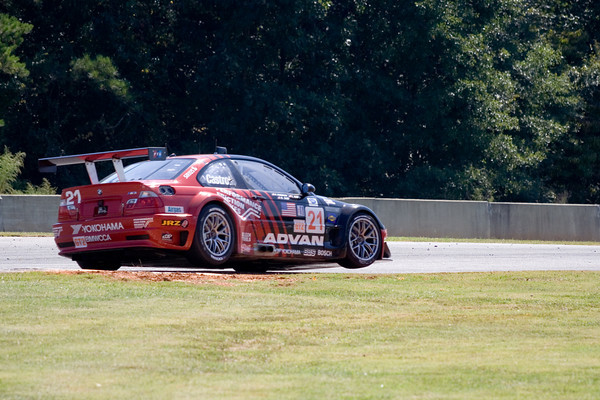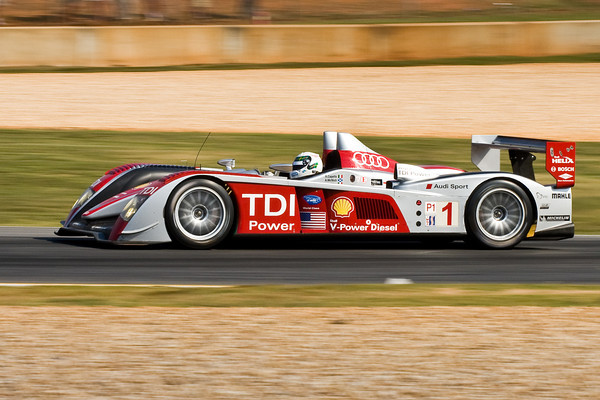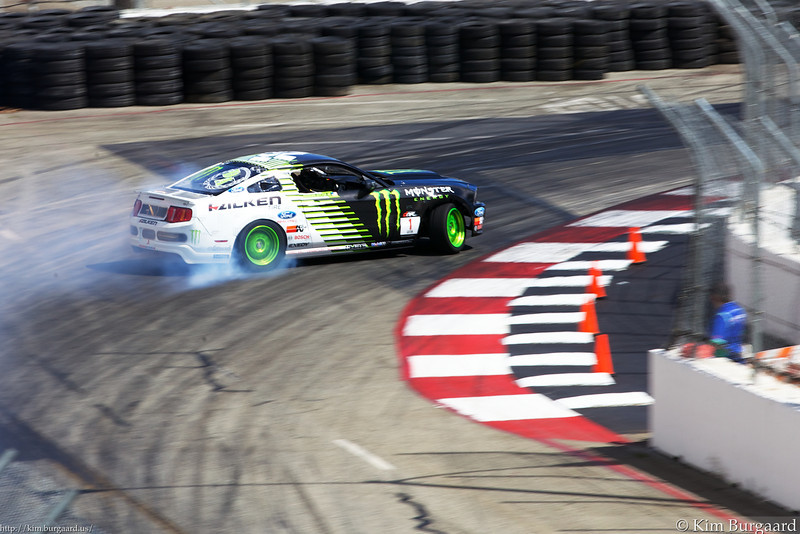The Baltimore race is new, and a street circuit changes often with respect to the barrier material, so it is impossible to tell you where to take shots. For that, you will need to wander around the track, which is usually fairly easy. Don't stay in one spot in the stands.
For IRL and ALMS races, credentialed photographers (those with proof they work for a publication) can apply for a get a photo badge/vest and they are allowed in special photographer areas that are inside the race track, so that they wall/fence is not in view. If you can swing this, you should, though Baltimore will likely be limited in badges and photo locations...bigger tracks like RoadAtlanta are less so.
For images, I recommend:
Camera: on Servo focus mode (or hybrid: for Canon this is AI Servo or AI Focus), and highest shot speed your camera supports.
Lens: I recommend a zoom, such as 70-200. 500mm is very nice for tight shots of the driver.
Stability: I recommend a monopod, as most of your shots will be done panning, for which tripods are useless. In a similar fashion, VR/IS is fairly useless as well, though comes in handy if there are evening shots.
Shooting: The technique you choose will depend on the type of shot you want 1) action or 2) motion.
1) action: Here you are shooting to show the physical and dynamic nature of autoracing, such as a wheel off the track, two cars fighting for position, a car spinning off road, or a wreck. You need high shutter speed to stop the motion, and you likely want higher aperture to ensure sharpness. I go above 1/1000th for these on bright days.
The technique is simply to get the car in the frame and fire away. Focus on composition and position yourself at critical corners like chicanes where there are plenty of offs, spins and rubbing fenders. If you are fairly close to the action, it is important to pan: you will be surprised at how fast the cars are, they do not stay in frame long, and at 200+mm focal length it is literally a blink of the eye.
Pre-frame your shot, and pre-focus. When your target cars arrive, just hold down the shutter button, maybe a bit of panning. You will take lots of photos that you will discard. Chimp only if you need the room on your cards, or you will miss the action.
2) motion: The trick here is to balance shutter speed to ensure sharpness, while also capturing some motion blur. The actual shutter speed depends on conditions, but is usually below the focal length of the lens (say less than 1/200th), so the monopod is critical here. I usually shoot between 1/80 - 1/160th. Shots that include wheels are the best, because they benefit most from the motion blur. Avoid shots moving directly toward or away from the camera with this technique.
The technique is to pre-frame and pre-focus the shot, and then as the car enters your target area, shoot and pan with the car as you fire off shots. This is where high frames per second pay the bills. You will need lots of practice and chimp to make sure you have the right shutter speed. You will get mostly shots of the car partially in the frame, but a few keepers.
Here is an example of 1) Action:

And here is a shot of 2) Motion:

For more, visit my Auto Racing shots at:
http://digitalmason.smugmug.com/Auto-Racing

 Freezing the action: 200mm, f/2.8, ISO 160, 1/5000 (full size
Freezing the action: 200mm, f/2.8, ISO 160, 1/5000 (full size  Hand-held panning to blur the background: 200mm, f/18, ISO 100, 1/60 (full size
Hand-held panning to blur the background: 200mm, f/18, ISO 100, 1/60 (full size 


